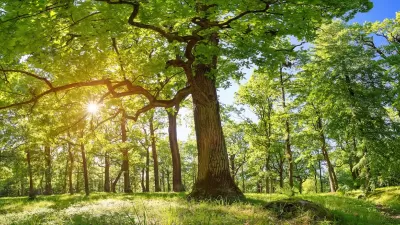Scientists in Florida are using GIS technology to strategically manage prescribed burns, aiding in the restoration and biodiversity of longleaf pine ecosystems while enhancing climate resilience across the Southeast.

Longleaf pine ecosystems, once stretching across 90 million acres in the southeastern U.S., have dwindled to just three percent of their original size. These ecosystems are vital for biodiversity, housing over 600 species, including 29 that are endangered or threatened. As reported by Anthony Schultz and Sunny Fleming, scientists at Tall Timbers in Florida are using Geographic Information Systems (GIS) to manage longleaf pine restoration. By combining detailed environmental data with fire management practices, researchers are learning how prescribed burns help maintain the health and regeneration of these forests. Tall Timbers has been at the forefront of fire ecology for over 60 years, employing prescribed fire to manage ecosystems and enhance biodiversity.
At the core of the restoration is the Southeast FireMap, an innovative tool that integrates data from satellite imagery and artificial intelligence to track fire history and impacts across longleaf pine communities. By mapping areas that have burned, researchers can better understand the effects of fire on tree regeneration and overall ecosystem health. This approach, driven by data and field observations, allows land managers to strategically plan prescribed burns that mimic the natural fire cycles necessary for longleaf pine ecosystems to thrive. The digital twin technology also aids in tracking wildlife impacts and supports decision-making in managing these habitats.
In addition to restoring forests, Tall Timbers' efforts extend to public education and training, as they host the National Interagency Prescribed Fire Training Center. This center educates land managers from across the country on how to safely use fire to benefit ecosystems while minimizing risks like smoke pollution. Through collaborations and the use of cutting-edge GIS technology, Tall Timbers is advancing the preservation of longleaf pine forests, increasing biodiversity, and building climate resilience across the Southeast.
FULL STORY: Tech Meets Ecology: Environmental Digital Twin Enhances Longleaf Pine Restoration

Alabama: Trump Terminates Settlements for Black Communities Harmed By Raw Sewage
Trump deemed the landmark civil rights agreement “illegal DEI and environmental justice policy.”

Planetizen Federal Action Tracker
A weekly monitor of how Trump’s orders and actions are impacting planners and planning in America.

Why Should We Subsidize Public Transportation?
Many public transit agencies face financial stress due to rising costs, declining fare revenue, and declining subsidies. Transit advocates must provide a strong business case for increasing public transit funding.

Understanding Road Diets
An explainer from Momentum highlights the advantages of reducing vehicle lanes in favor of more bike, transit, and pedestrian infrastructure.

New California Law Regulates Warehouse Pollution
A new law tightens building and emissions regulations for large distribution warehouses to mitigate air pollution and traffic in surrounding communities.

Phoenix Announces Opening Date for Light Rail Extension
The South Central extension will connect South Phoenix to downtown and other major hubs starting on June 7.
Urban Design for Planners 1: Software Tools
This six-course series explores essential urban design concepts using open source software and equips planners with the tools they need to participate fully in the urban design process.
Planning for Universal Design
Learn the tools for implementing Universal Design in planning regulations.
Caltrans
Smith Gee Studio
Institute for Housing and Urban Development Studies (IHS)
City of Grandview
Harvard GSD Executive Education
Toledo-Lucas County Plan Commissions
Salt Lake City
NYU Wagner Graduate School of Public Service





























